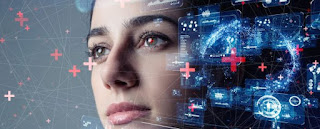In recent years, the rapid advancement of artificial intelligence (AI) technology has permeated various aspects of our lives, from simple tasks like setting an alarm to complex operations such as data analysis and decision making. Despite its numerous benefits, a palpable fear of AI persists among many. This unease can be attributed to a combination of misinformation, unfamiliarity, and cultural representations that often portray AI in a dystopian light.
Understanding the Fear of AI
Misinformation and Uncertainty
One of the primary reasons for fear of AI is misinformation. AI is a broad and often misunderstood concept, encompassing everything from basic automation tools to advanced machine learning systems. People may fear AI because they do not fully understand what it is, how it works, or its implications. This fear is further fueled by sensational media portrayals, which often focus on worst-case scenarios.
Job Displacement Concerns
Another significant concern is the fear of job displacement. As AI systems become capable of performing tasks traditionally done by humans, there is an understandable worry about the future of employment. This fear is not unfounded, as certain industries are more susceptible to automation than others.
Loss of Human Control
There's also the fear of losing control. As machines grow smarter, there's an underlying fear that humanity might lose control over these systems. The idea that AI could make decisions without human input—or worse, against human interests—is a source of concern.
Strategies to Mitigate AI Fear
Education and Transparency
The most effective way to combat fear is through education. Providing clear, accessible information about what AI is and what it is not can demystify the technology. It’s important for educational initiatives to explain the design, function, and scope of AI systems, emphasizing how AI operates under human-set parameters and oversight.
Showcasing Benefits
Highlighting the benefits of AI can also alleviate fear. AI improves efficiency, enhances safety, and solves complex problems in fields like medicine, environmental science, and logistics. Real-world examples, such as AI's role in improving medical diagnostics or optimizing energy use in homes, make its benefits tangible.
Encouraging Ethical AI Development
Developing AI ethically and responsibly is crucial. This means creating AI systems that are not only effective but also fair, unbiased, and transparent in their operations. Governments and organizations should establish clear guidelines and standards for ethical AI development, ensuring that AI acts in the best interests of society.
Inclusion in AI Development
Involving a diverse range of voices in AI development can help ensure that AI systems serve a broad spectrum of human needs and are sensitive to different cultural contexts. This inclusion can help build trust and acceptance among various communities.
Preparing for Economic Transitions
Addressing economic fears directly is essential. This includes policies and programs to support workers who may be displaced by AI, such as retraining programs, lifelong learning opportunities, and safety nets that encourage career mobility.
AI represents a significant shift in how we interact with technology. The fear surrounding it is not unusual nor unfounded, but through education, ethical development, and inclusive policies, we can foster a healthy relationship with AI. Embracing AI with awareness and preparedness can lead us toward a future where technology amplifies our human potential, rather than diminishes it.
















